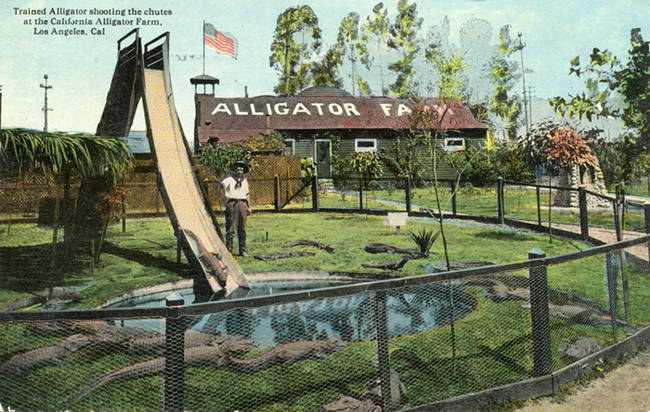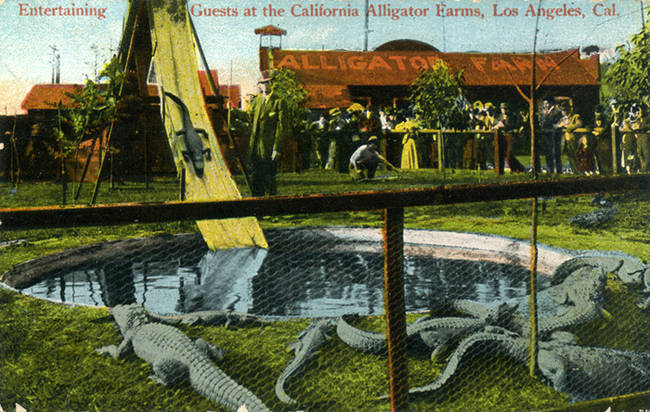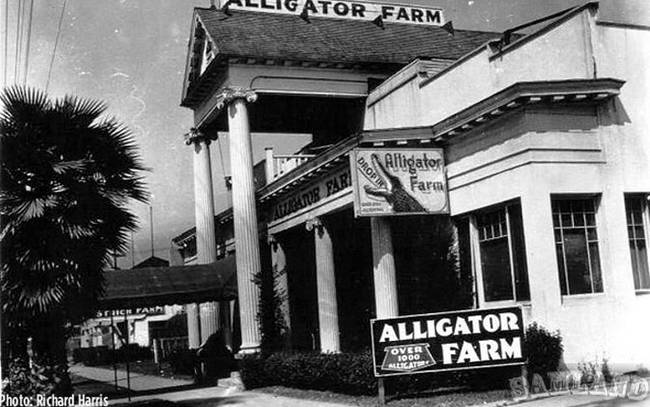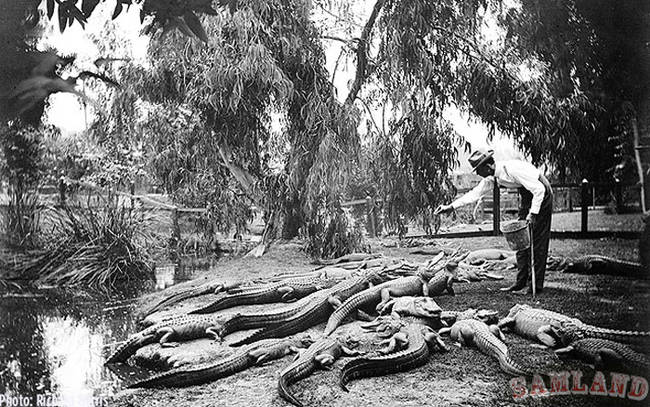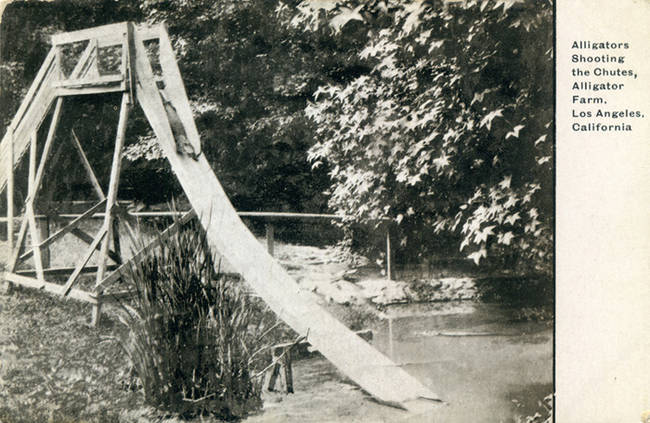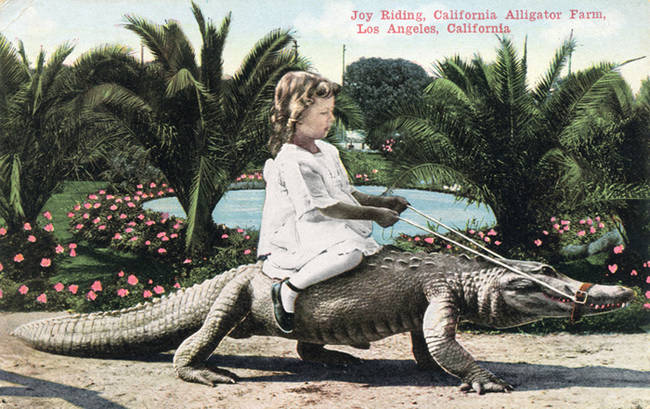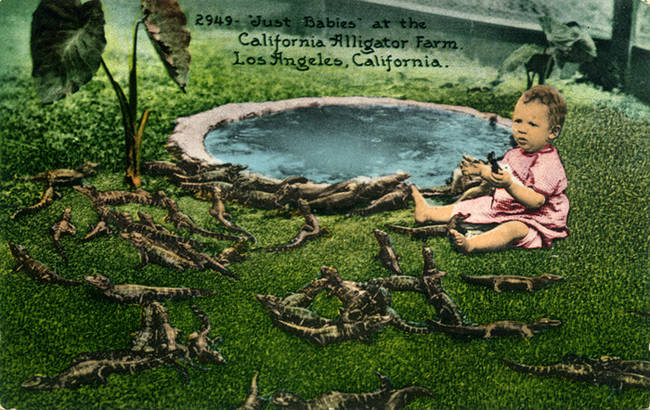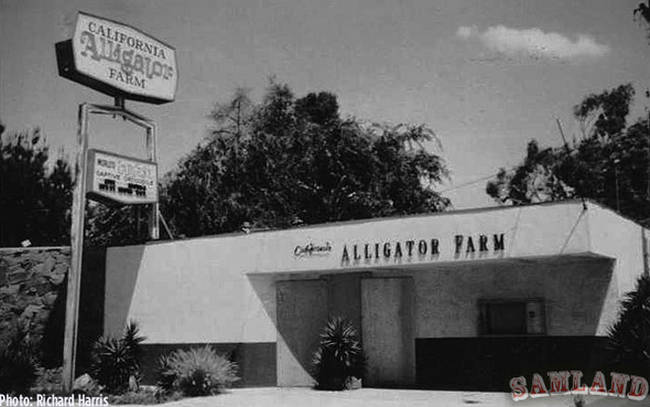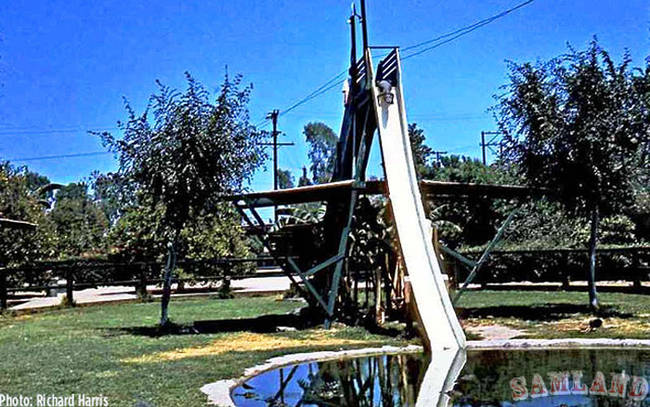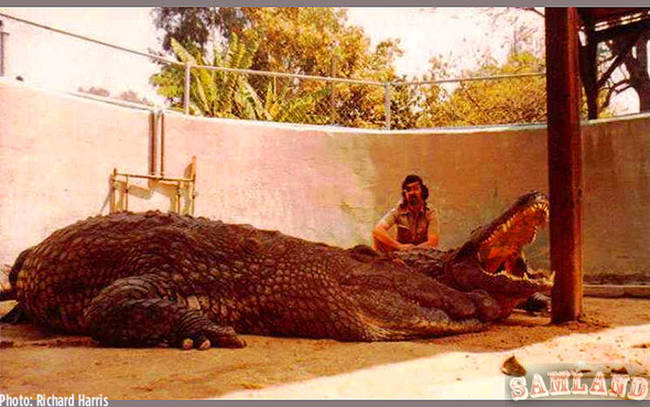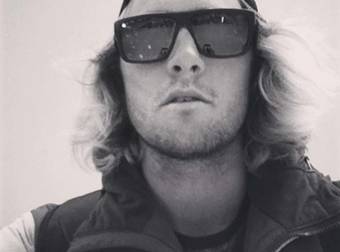A trip to California can be chock full of tourist delights, ranging from the rides at DisneyLand to the natural beauty of desert oases. But back in the day, it was a peculiar type of farm life that enticed tourists to visit. Based in Buena Vista, the original Alligator Farm was one of the biggest attractions for those looking for something wilder than Mickey Mouse.
Founded in 1906 by a man named Alligator Joe, the facility remained a popular destination throughout the 1950s.
Joseph ‘Alligator Joe’ Campbell started in the reptile business back in Hot Springs, AR, before relocating to southern California.
The Lincoln Heights area was a popular place for LA residents to visit as a mini-getaway.
The cost of admission: 25 cents.
The gators were sorted by size, some only a few inches and others at up to thirteen feet.
In 1911, Alligator Joe sold his share to partner Francis Earnest, who began importing other reptiles.
Earnest brought in iguanas from South America and 2-foot-long chuckwalla lizards.
In fact, their biggest attraction was Billy the alligator, supposedly the oldest in captivity. The docile old gator even allowed children to ride him.
Most of the large alligator jaws seen in movie screens throughout the 1910s and the 1960s belonged to Billy.
Ages of gators at the farm reportedly ranged from newborn to elderly gators.
The facility supplied Hollywood with several of their reptiles over the years, here shown in Disney’s The Happiest Millionaire.
After Earnest’s passing in 1946, his son took over and eventually moved the farm to Buena Park, renaming it California Alligator Farm.
The two-acre site was right next door to Knott’s Berry Farm and also featured snakes and lizards.
It was even popular with celebrities and welcomed visits from Albert Einstein, Lucille Ball, Michael Landen, Anthony Perkins, and more.
But it wasn’t just fun and fame: the facility was also the first to breed many varieties of reptiles, such as Mugger crocodiles, Cuban crocodiles, and Ceylonese pythons. It was also the first to breed Nile crocodiles in the western hemisphere.
In its heyday, the farm would see as many as 130,000 tourists throughout the year. The attraction began losing popularity in the 1950s, and by the 1980s, their numbers were less than 50,000 visitors per year. They closed the gates for good in 1984, and the reptile residents were moved to a private preserve in Florida.
The building sat empty since, with barely any remnants of its former glory. However, many still remember the fun they could find on the unusual farm.
